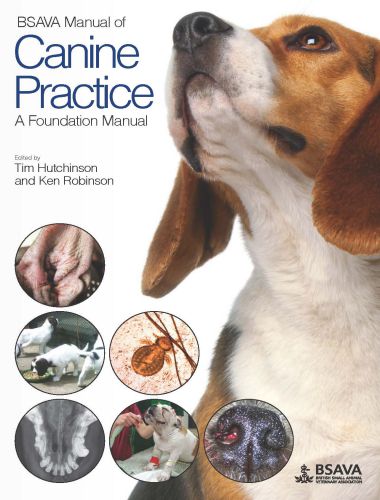Manual of Canine Practice: A Foundation Manual, The last 20 years has seen a remarkable growth in the knowledge base and skillset available in small animal practice.
Manual of Canine Practice: A Foundation Manual

this book will be an invaluable reference for veterinary students and new or recent graduates. Although it is not exhaustive, it is infinitely useful, and it is a book that I wish had been given to me on my first day in private practice.
Publications from the company have been a useful barometer of these changes: once there was a book called Canine Medicine and Therapeutics which, at the time, successfully captured what practitioners needed to know on a day-to-day basis. However, with the rise of the small animal profession and the increasing depth of specialization, this volume was replaced by the hugely successful series of Manuals – a group of publications that has itself been subject to expansion in its scope and numerous new editions. This ready-made practice library now really does provide everything the practitioner needs, whatever their speciality, but may appear daunting to the relatively inexperienced vet looking for a concise answer to one of the many common problems presented in the consulting room.
Read More: Manual of Canine and Feline Musculoskeletal Imaging
This is the niche for this new Manual. Authored by vets with many years’ experience in general practice, it aims to provide the first port of call for the busy practitioner faced with uncertainty over a new case. Common sense, first line approaches are given in a problem-oriented setting, stemming from the nose-to-tail examination. We hope it will become an invaluable tool to a new generation of vets.
Authored by veterinarians with many years’ experience in general practice, Manual of Canine Practice provides the first port of call for the busy small animal practitioner faced with uncertainty over a new case.
The development over the last 20 years of a range of formal specialist veterinary qualifications has produced a significant surge in the range and depth of knowledge in canine practice. Concise answers to common questions that occur in consulting rooms are becoming harder to find; this book swings the balance back to the practitioner. As well as traditional systems-based medicine, this Manual also provides information on the arts of practice such as consultation technique and dealing with common but testing situations.
In the clinical presentations section of the book, first line approaches are given in a problem-oriented setting with a significant focus on the nose-to-tail physical examination, a detailed clinical history and common, readily available, diagnostic tests.
| PDF Size: 30 MB | Book Download Free |
Password: pdflibrary.net
